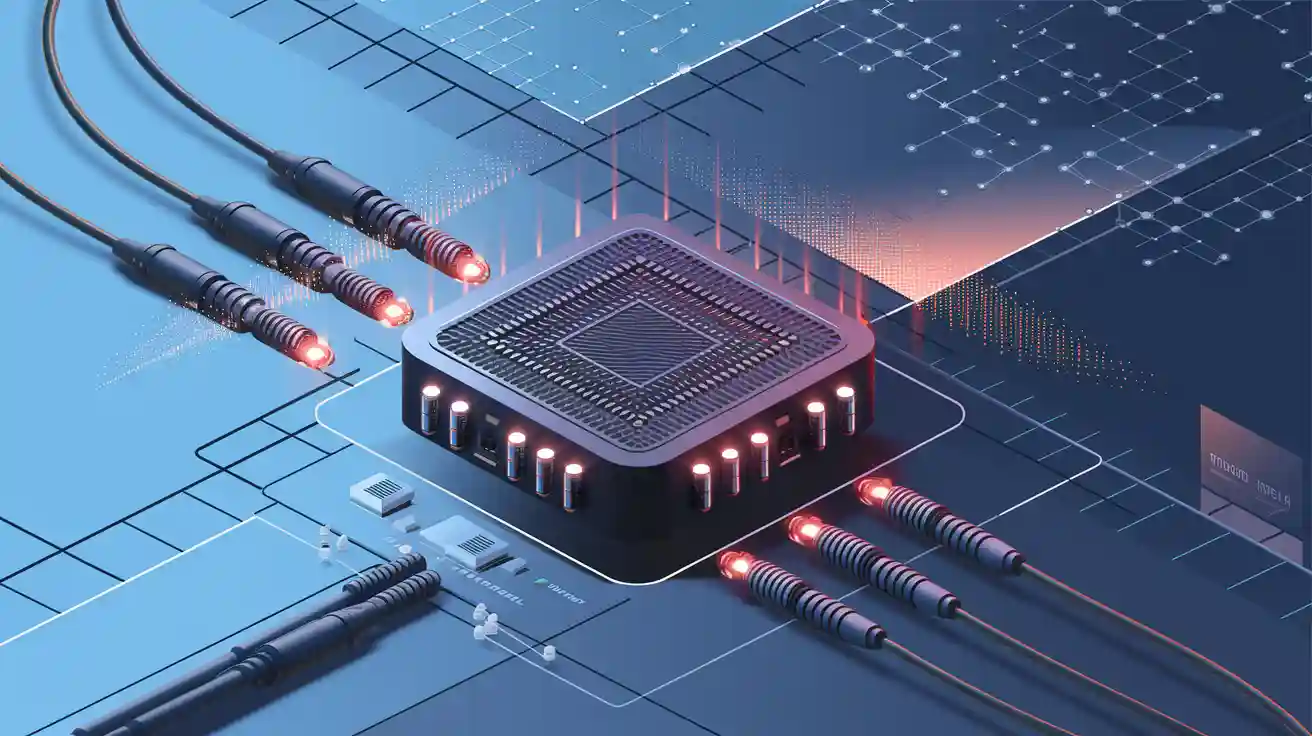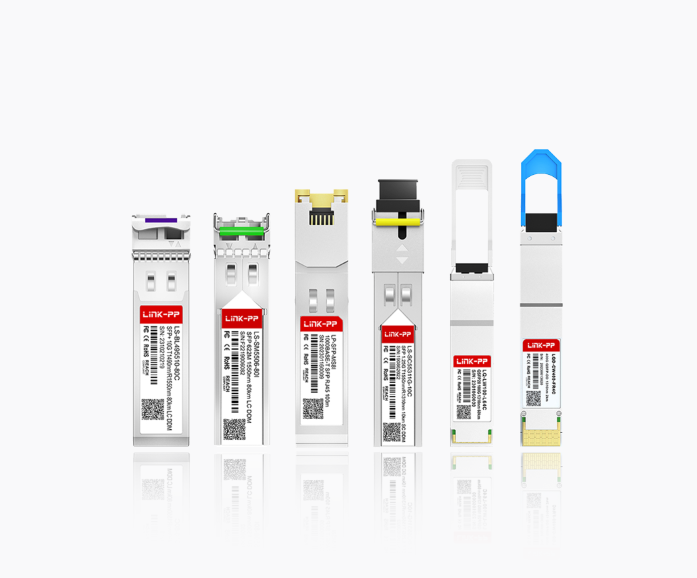In the realm of optical networking, the operating temperature range of transceivers is a critical factor influencing performance, reliability, and longevity. Selecting the appropriate temperature grade ensures that your network infrastructure operates optimally under varying environmental conditions. This guide delves into the distinctions between Commercial (COM), Extended (EXT), and Industrial (IND) temperature ranges, highlighting their applications and providing examples from LINK-PP's product lineup.
In this guide, we’ll explore:
✔ Three key temperature ranges (Commercial, Extended, Industrial)
✔ Applications & technical challenges for each category
✔ LINK-PP’s temperature-optimized solutions
✔ How to select the right transceiver

1. Why Operating Temperature Matters
Operating outside their specified temperature range can lead to increased error rates, signal degradation, and even hardware failure. Optical transceivers generate heat during operation, and ambient temperature fluctuations can affect:
Laser wavelength stability (critical for DWDM systems)
Signal integrity (higher bit error rates in extreme conditions)
Lifespan (components degrade faster outside rated ranges)
2. Three Key Temperature Ranges & Applications
Types | Range | Typical Applications |
|---|---|---|
Commercial (COM) | 0°C to 70°C | Data centers, enterprise networks, Short-haul metro networks,climate-controlled environments |
Extended (EXT) | -20°C to 85°C | 5G fronthaul (outdoor base stations),Industrial IoT hubs,areas with moderate temperature variations |
Industrial (IND) | -40°C to 85°C | Mission-critical applications in industries like oil and gas, transportation, and military. |
A. Commercial Temperature Range (COM): 0°C to 70°C
Commercial-grade transceivers are designed for stable, climate-controlled environments such as data centers and enterprise networks. These settings typically maintain temperatures within the 0°C to 70°C range, ensuring optimal performance without the need for specialized equipment.
Example Product:
LINK-PP LS-CW4910-40C SFP+ 10G CWDM Transceiver
Wavelength: 1490nm (CWDM grid)
DOM Support: Real-time monitoring of Tx/Rx power
Compliance: SFP+ MSA, RoHS
Transmission Distance : 40km
🔗 Product Page | Datasheet
B. Extended Temperature Range (EXT): -20°C to 85°C
Extended-grade transceivers are suitable for environments where temperatures may fluctuate beyond standard room conditions but not reach extreme levels. They are commonly used in outdoor installations or areas without strict climate control.
Example Product:
LINK-PP LS-SM3125E-10E 10/25GBASE-LR SFP28 Transceiver
Dual-rate support: 10G/25G flexibility
DOM & DDM: Full diagnostics for remote sites
Transmission Distance : 10km
Compliance: IEEE 802.3ba, CMIS 4.0
🔗 Product Page | Datasheet
C. Industrial Temperature Range (IND): -40°C to 85°C
Industrial-grade transceivers are engineered for the most demanding environments, including extreme temperatures, high humidity, and exposure to dust or vibrations. They are essential for applications in industrial automation, outdoor telecommunications, and other harsh settings.
Example Product:
LINK-PP LS-CW2710-40I 10G 40km SFP+ Optical Module with DOM
1270nm wavelength: Ideal for single-fiber bidirectional systems
Power efficiency: <1.8W despite harsh conditions
Compliance: SFP+MSA, SFF-8472, RoHS
🔗 Product Page | Datasheet
3. Factors Influencing Operating Temperature
1. Internal Heat Generation
Optical transceivers generate heat during operation due to the activity of components like lasers, photodiodes, and electronic circuits. High data transmission rates and power consumption can exacerbate this heat generation, potentially leading to thermal stress if not properly managed.
2. Environmental Conditions
External factors such as ambient temperature, humidity, and airflow significantly impact transceiver temperatures. Deployments in outdoor or industrial settings may expose transceivers to extreme temperatures, necessitating modules designed for broader operating ranges.
3. Quality and Design of the Transceiver Module
The materials and design of a transceiver affect its thermal performance. High-quality materials and thoughtful design enhance heat dissipation, while poor construction can lead to inadequate thermal management and reduced reliability.
4. Managing Temperature-Related Issues
1. Implementing Proper Ventilation and Cooling Systems
Ensuring adequate airflow around transceivers helps dissipate heat. This can be achieved through strategic equipment placement, use of cooling fans, and maintaining clean air pathways to prevent overheating.
2. Using Heat Sinks and Thermal Pads
Attaching heat sinks to transceivers increases the surface area for heat dissipation. Thermal pads can fill gaps between components and heat sinks, improving thermal conductivity and reducing hotspots.
3. Monitoring and Alarming Systems for Temperature Control
Integrating temperature sensors and alarms allows for real-time monitoring of transceiver temperatures. These systems can trigger alerts or automatic shutdowns if temperatures exceed safe thresholds, preventing damage.
5. How to Select the Right Temperature Grade
When choosing an optical transceiver, consider the following:
Environment: Assess the typical temperature range of the installation site.
Application: Determine the criticality of the application and the potential impact of transceiver failure.
Budget: Industrial-grade transceivers may have higher costs due to their robust design, but they offer greater reliability in harsh conditions.
Selecting the appropriate temperature grade ensures optimal performance and longevity of your network infrastructure.
Conclusion
Selecting the correct operating temperature range for optical transceivers is critical for network uptime, longevity, and compliance. LINK-PP offers a full portfolio of commercial, extended, and industrial-grade transceivers, rigorously tested for performance in diverse environments.
Explore LINK-PP Solutions:
See Also
The Importance Of Digital Monitoring In Optical Transceivers
Exploring The Role Of ROSA In Optical Modules
Understanding TOSA's Significance In Optical Module Functionality




